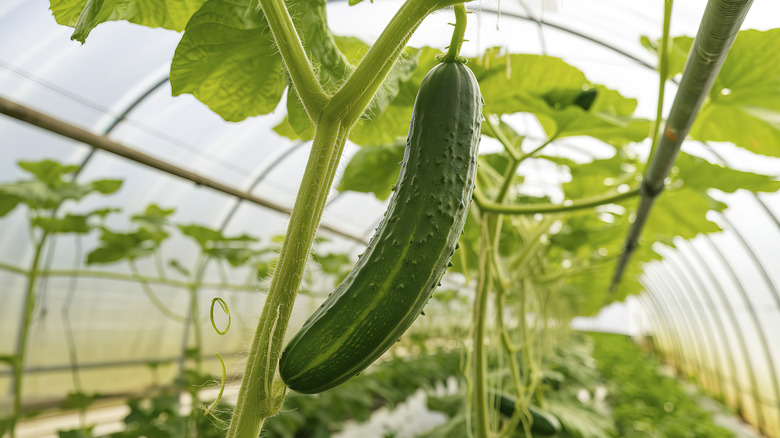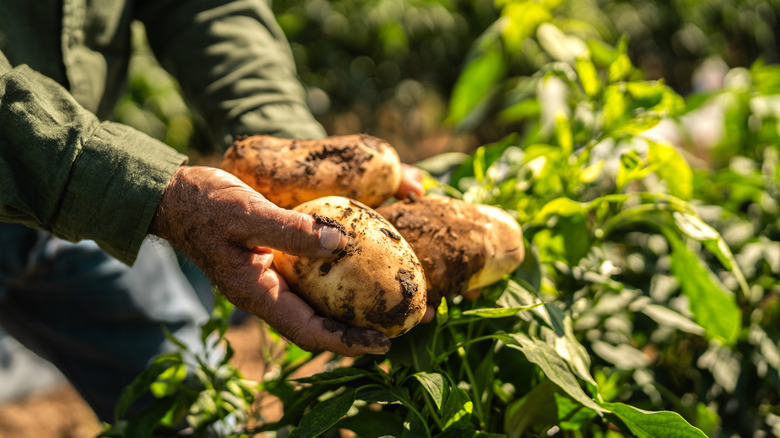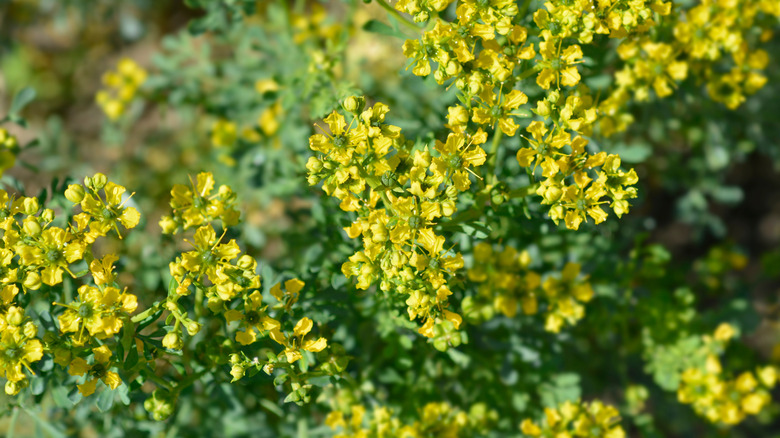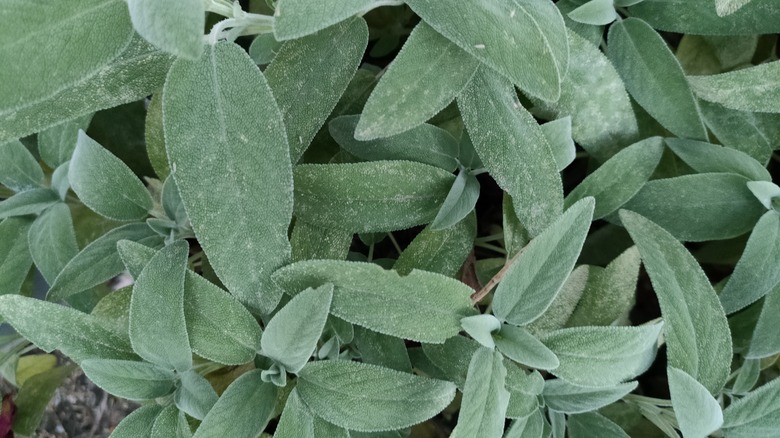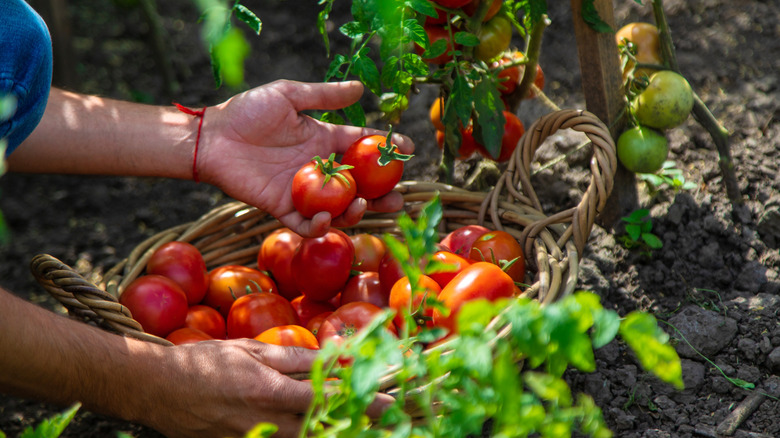5 Garden Vegetables You Don't Want Growing Near Your Cucumbers
Companion planting — also known as intercropping — is a practice of growing certain plants near one another for the complementary traits. These traits might positively influence one another's growth. They may have root systems that don't compete or perhaps one plant draws insects beneficial to the other. But of course, as there are good neighbors for plants, there are also those that are less friendly.
Cucumbers (Cucumis sativus), in particular, are often the subject of companion planting experiments and discussion. Corn, for example, is a great companion for cucumbers. They both like similar soil conditions and corn provides a nice tall structure for vining cucumbers to climb. And radishes can help break up compacted soil for cucumbers and drive off certain pests.
Plants that might hinder your cucumbers' growth or deliver less-tasty fruit or create optimal conditions for diseases and pests to proliferate should be avoided. Keep in mind that selecting vegetable garden companion plants is not always a one-size-fits-all venture. What works or doesn't work in your garden might not be the case for all gardens. It's worth experimenting with different combinations to see what works for you.
Potatoes
While potato plants — Irish potatoes (Solanum tuberosum) in particular — and cucumbers might taste great in a potato salad together, sadly, they are typically not friends in a vegetable garden. One of the primary reasons for this is that potatoes are thirsty, drought-sensitive plants and cucumbers — whose fruits can be up to 90% water — also tend to be moisture hogs. The competition for water might just end up causing stress for both plants, possibly resulting in bitter cucumbers and decreased potato yield.
Another issue that this water competition might either cause or worsen is the presence of Phytophthora infestans — otherwise known as potato blight or late blight. The fungus responsible for this blight tends to proliferate in standing water and poorly drained soil, which might occur if you're desperately trying to keep up with the water needs of both species. Additionally, while most devastating to cucumbers and their relatives, cucumber mosaic virus (CMV) can affect potatoes — rarely though.
Rue
Native to the Balkans and grown as an herb or ornamental plant, rue (Ruta graveolens) is a woody shrub from the citrus family. Often given the nod as an aphid repellent plant, rue is also considered a good companion plant for roses, raspberries, fig trees, and lavender thanks to its tendency to repel a wide variety of pests. However, the very aspect of rue that repels pests — its strong aroma and bitter flavor— is also what makes it a bad choice of companion plant for your cucumbers: it can negatively impact the flavor of the produce.
A far better choice of pest-controlling aromatic herb companion is dill. Unlike rue, which relies on its unpalatable scent and taste to drive away pests, dill works to attract pests' predators, such as wasps, lady beetles, and lacewings.It also attracts beneficial pollinators such as butterflies and bees! Plus, once you've harvested your cucumbers, dill makes a tasty addition to pickles.
Passionfruit
Passionflower or passionfruit (Passiflora edulis), with its beautiful, showy flowers and delicious fruit, is easy to grow from seeds. It is a tempting choice for USDA Hardiness Zones 10 through 12. You may be entertaining visions of climbing cucumber vines and passionfruit vines as congenial trellis roommates — they even share a fair number of preferences including fertile, well-draining soil and full sun — but unfortunately, this may be a pairing to be avoided.
The primary reason that this pairing is a no-go is that passionfruit is highly susceptible to cucumber mosaic virus (CMV), which can lead to malformed, mosaic-patterned, and yellowed leaves as well as damaged fruits. Because CMV can be spread either mechanically (on the gardener's hands) or via aphid feeding, growing plants that are susceptible to the virus so close together is probably inadvisable. Additionally, while not necessarily related, the presence of CMV may increase the severity of another common affliction of passionfruit: passion fruit woodiness virus.
Sage
A well-loved plant by both chefs and practitioners of holistic medicine, sage (Salvia officinalis) is a common sight in many gardens. Fragrant, aesthetically pleasing, and attractive to pollinators, sage plants are great choices of companion plants for many vegetables, including carrots and cauliflower. When it comes to cucumbers, however, the two are not destined to be bosom buddies.
There are a couple of reasons to keep your sage and cucumbers far apart. For one thing, sage produces natural oils thatcan have an inhibitory effect on the growth of your cucumber plants. Additionally, the strong aroma and flavor of nearby sage may adversely impact the flavor of your cucumbers. If you're looking for a better choice of herbaceous companion for your cucumbers, look no further than chamomile. It is not only said to improve the flavor of cucumbers, but also draws helpful predators of common garden pests and returns nutrients, such as sulfur and potassium, to the soil.
Tomatoes... sometimes
This one gets a little complicated. If you Google "can I plant cucumbers with tomatoes?," you'll turn up massive amounts of often contradictory and largely anecdotal information and opinions. Some gardeners claim that tomatoes and cucumbers cannot thrive near one another while others vouch for the potential of tomatoes and cucumbers as peaceful neighbors.
So can you intercrop your cucumbers with tomatoes? The answer falls somewhere in the realm of "you can try, but it might be inadvisable." Tomatoes and cucumbers have some things in common: both are hot weather plants that relish full sun and fairly heavy drinkers. Their need for similar growing conditions can make them good companions under the right circumstances. However, depending on the variety of each plant, you may end up with issues of competition for space, light, and water. Make sure you carefully research the growing patterns of the cucumber and tomato varieties and sizes you want to plant to ensure they won't crowd each other out.
Some gardeners may also encounter significant difficulties where pest control and disease are concerned. Both are favored hosts for whiteflies, which leach nutrients and can stunt plants' growth. Both are also susceptible to CMV, which they might pass back and forth via aphids. If CMV is an issue in your area, you may want to keep your tomatoes separated from your cucumbers by a crop that isn't susceptible to the virus, such as corn.
